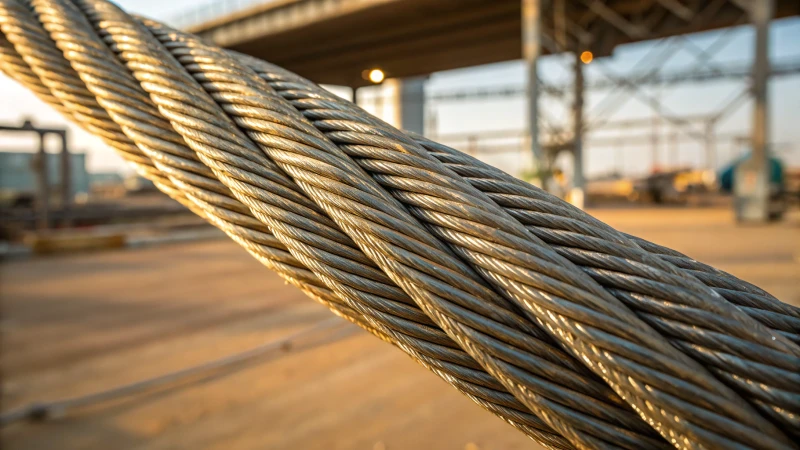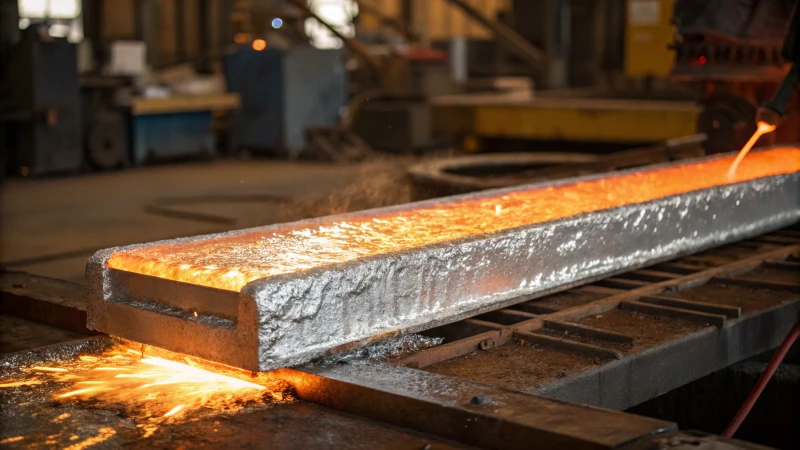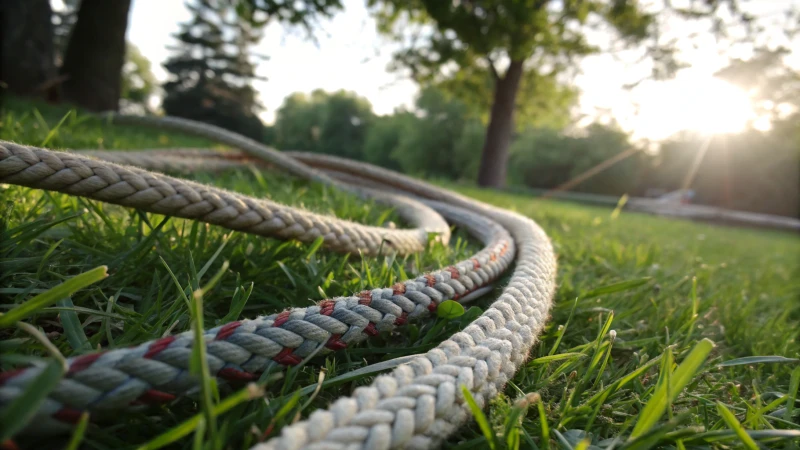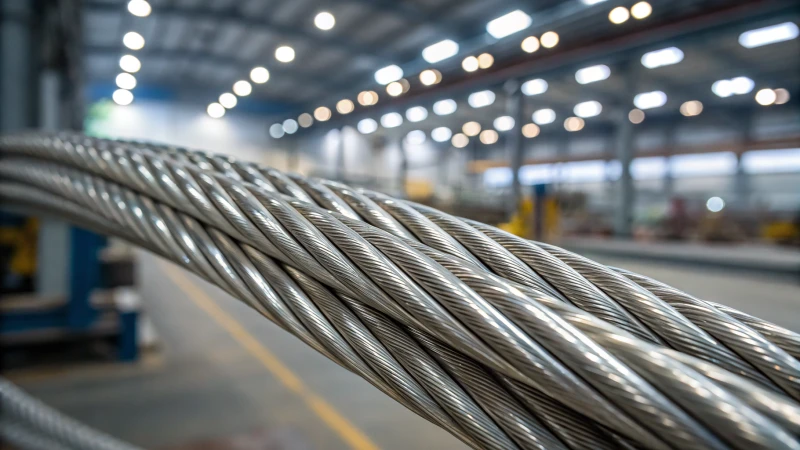
I remember the first time I realized how crucial corrosion resistance is for steel wire ropes.
To achieve optimal corrosion resistance in heavy-duty steel wire ropes, techniques such as galvanization, applying advanced coatings like PVC or nylon, and using stainless steel strands are employed. These methods enhance the rope's durability against harsh conditions, ensuring safety and longevity.
While these strategies offer immediate benefits, understanding the underlying principles and maintenance practices can maximize their effectiveness. Picture this: you're on a construction site by the coast, where salty air and humidity are constant companions. It hits you that without proper protection, those steel ropes could easily fall victim to rust and wear, jeopardizing safety and deadlines. By embracing these corrosion-fighting techniques, not only do you prolong the lifespan of the ropes, but you also safeguard your projects from costly interruptions. Let's dive deeper into how these methods work wonders in challenging environments.
Galvanization enhances steel wire rope's corrosion resistance.True
Galvanization adds a protective zinc layer, preventing rust formation.
Stainless steel strands are less effective than PVC coatings.False
Stainless steel provides inherent corrosion resistance, often more durable.
How Does Galvanization Prevent Steel from Corroding?
Ever wondered how we keep steel from rusting away in tough environments? Galvanization is the unsung hero here. Let me take you on a journey to understand how this process acts as a shield against corrosion.
Galvanization coats steel with zinc, creating a protective shield against elements that cause rust. This not only extends the steel's lifespan but also ensures it remains strong and reliable, even in harsh conditions.

Understanding Galvanization
Let me tell you about the time I first learned about galvanization. I was overseeing a project near the coast, where the salty air seemed to corrode everything in its path. That's when I discovered the magic of galvanization—a process where steel is given a protective zinc layer. Imagine dipping a cookie in melted chocolate to coat it; that's hot-dip galvanizing for steel, only instead of chocolate, it's zinc.
And just like how a chocolate coating protects your cookie from getting soggy, this zinc layer shields the steel from moisture and oxygen. The beauty of it? Even if the zinc gets scratched, it continues to protect the steel underneath. It's like having a bodyguard who takes the hits but keeps you safe.
The Science Behind Corrosion Resistance
Now, here's where it gets fascinating. Zinc doesn't just sit there; it actively works to protect the steel. When exposed to air and moisture, zinc takes one for the team by corroding first. It's a bit like those brave knights in medieval times—sacrificing themselves so the royalty (our precious steel) can remain unharmed.
Here's a simple table to break down the process:
| Process | Description |
|---|---|
| Hot-dip Galvanizing | Steel dipped in molten zinc |
| Electro-galvanizing | Zinc applied using electric current |
| Galvanic Protection | Zinc corrodes instead of steel |
Applications and Advantages
I've seen galvanized steel in action across various industries—from the towering skyscrapers in bustling cities to the sturdy ships battling fierce ocean waves. It's especially invaluable in coastal areas1, where corrosion tries its hardest to win. Innovations like PVC and nylon coatings have pushed the lifespan of these materials even further.
However, nothing is perfect. Galvanization does have its Achilles' heel—it doesn't fare well in highly acidic or high-temperature environments. So, if you're dealing with such conditions, exploring other materials might be wise.
Sustainability and Economic Impact
From my experience, investing in galvanized steel pays off in spades. The reduction in maintenance and longer replacement cycles align with today's push towards sustainability. Plus, it saves money in the long run—who doesn't love that?
With the world shifting towards eco-friendly construction, galvanized steel is quite the ally thanks to its recyclability and lower environmental footprint compared to other materials.
If you're curious about how galvanization fits into sustainable construction2, diving into case studies of green projects can offer enlightening insights.
Galvanization uses zinc to protect steel from corrosion.True
Zinc acts as a sacrificial layer, corroding before the steel.
Electro-galvanizing involves dipping steel in molten zinc.False
Electro-galvanizing uses an electric current, not dipping in molten zinc.
How Do Coatings Like PVC and Nylon Extend Rope Life?
Imagine ropes that withstand the harshest conditions, enduring time and elements with ease. That's the magic of PVC and nylon coatings.
PVC and nylon coatings extend rope life by acting as protective shields against environmental elements, enhancing flexibility, and increasing durability. This makes them ideal for use in harsh conditions, reducing wear and tear and prolonging the rope's service life.

The Role of PVC and Nylon in Rope Durability
I remember my first project where we used coated ropes—those things were lifesavers! Working on a construction site near the coast, the saltwater and relentless sun would chew through regular ropes in no time. But once we switched to ropes coated with PVC and nylon, the difference was night and day.
Protection Against Environmental Factors
Coated ropes are like the unsung heroes of the job site, taking on water, UV rays, and chemicals with ease. PVC coatings excel in weather resistance3, making them perfect for projects where Mother Nature is at her fiercest. Meanwhile, nylon gives you that tough abrasion resistance needed in mining operations or any place where rough surfaces are the norm.
| Coating Type | Key Benefit | Application Scenario |
|---|---|---|
| PVC | Weather Resistance | Coastal Construction |
| Nylon | Abrasion Resistance | Mining Operations |
Enhanced Flexibility and Handling
There's nothing worse than a rope that twists and kinks at every turn. Coatings can smooth out those issues, giving you flexible ropes that are a breeze to handle. For cranes or elevators where smooth operation is crucial, this flexibility is a game-changer.
Cost-Effectiveness of Coated Ropes
Initially, I was skeptical about spending more on coated ropes, but it didn't take long to see their value. While they cost more upfront, they last longer, meaning fewer replacements and less downtime—saving money in the long haul.
Long-Term Financial Benefits
In my experience, when ropes don't snap or fray as often, you save on both direct replacement costs and the indirect costs of project delays. Fewer rope failures mean projects stay on track, boosting productivity and keeping everything running smoothly.
Choosing PVC and nylon coatings for your ropes isn't just about extending their life; it's about ensuring your operations run efficiently and reliably. It's a decision that pays off in durability, safety, and cost savings4.
PVC coatings make ropes weather-resistant.True
PVC offers excellent resistance to weather conditions, making ropes durable.
Nylon-coated ropes are ideal for coastal construction.False
PVC, not nylon, is best for weather resistance in coastal areas.
Why Are Stainless Steel Strands Preferred for Durability?
Why do stainless steel strands earn their reputation for durability? It's a story of resilience and reliability.
Stainless steel strands are preferred for their outstanding corrosion resistance, strength, and longevity, making them ideal for demanding applications. Their capacity to endure harsh environments and bear heavy loads further amplifies their durability.

Corrosion Resistance: A Key Factor
I remember my first big project on the coast, where the salty sea breeze was a constant companion. We needed materials that wouldn't rust in the face of moisture5. That's when stainless steel became our hero, with its remarkable ability to resist corrosion. Unlike metals that falter when exposed to such conditions, stainless steel creates a protective oxide layer that shields it from damage.
| Material | Corrosion Resistance | Typical Applications |
|---|---|---|
| Stainless Steel | High | Marine, Construction |
| Mild Steel | Low | Indoor Fixtures |
This natural defense is why stainless steel strands are invaluable, especially in coastal or humid regions where corrosion feels like a relentless adversary.
Strength and Load-Bearing Capacity
Then there was this one time during a construction project when I was tasked with sourcing materials for cranes and hoists. The safety of the workers depended on the tensile strength of those ropes. Stainless steel didn’t let us down. Its superior tensile strength allowed us to handle heavy loads6 without deformation, providing the robust support structures we needed.
For example, in construction, the tensile strength of stainless steel is leveraged for tasks involving cranes and hoists, where safety and reliability are paramount.
Longevity and Cost-Effectiveness
I recall a conversation with a colleague about costs; he was skeptical about the initial expense of stainless steel. However, we found that its durability meant fewer replacements and lower maintenance costs over time. This was especially critical in industries like mining7 and oil & gas, where downtime can lead to significant financial losses.
Choosing stainless steel strands reduces the need for frequent replacements, contributing to overall savings. Plus, innovations like PVC or nylon coatings have extended their lifespan by providing extra protection against wear and environmental factors.
Sustainability: An Emerging Priority
In today’s world, sustainability isn’t just a buzzword; it’s a necessity. Stainless steel's eco-friendly nature adds another feather to its cap. Being fully recyclable, it aligns perfectly with sustainable construction goals, helping us minimize environmental impact while achieving high performance.
Moreover, companies like WonBon8 are leading the way by prioritizing eco-friendly manufacturing processes, ensuring their products meet both performance and sustainability standards.
Stainless steel strands resist corrosion better than mild steel.True
Stainless steel forms a protective oxide layer, unlike mild steel.
Stainless steel strands are more cost-effective initially.False
Initial costs are higher, but long-term savings make them cost-effective.
How Can You Prevent Corrosion in Steel Ropes?
Corrosion is the sneaky villain that can undermine the strength and longevity of steel ropes. Let's explore how to keep them in top shape.
To prevent corrosion in steel ropes, regularly inspect, clean, and lubricate them. Use protective coatings and store ropes in dry areas to further minimize corrosion risks.

Regular Inspections
I remember the first time I realized the importance of regular inspections. It was during a project where overlooking small details could lead to costly mistakes. Checking steel ropes for rust or discoloration early on can make a world of difference. A prompt response not only saves money but also ensures safety—two things I value deeply.
Conducting regular inspections is vital in detecting early signs of corrosion. Look for signs like rust, pitting, or discoloration on the surface of the ropes. Early detection allows for prompt remedial actions, such as applying rust inhibitors or replacing affected sections. This proactive approach not only ensures safety but also prolongs the rope's lifespan.
Cleaning and Lubrication
Cleaning steel ropes reminds me of the time my car broke down because I neglected basic maintenance. Just like my vehicle, steel ropes need regular cleaning with solvents to keep contaminants at bay. And lubrication? It's like applying sunscreen before a day at the beach—essential for protection against harsh elements. I always opt for lubricants designed specifically for steel ropes to ensure they remain shielded from moisture.
Cleaning steel ropes using appropriate solvents or mild detergents helps remove contaminants that can accelerate corrosion. After cleaning, apply lubricants specifically designed for steel ropes. These lubricants form a protective barrier against moisture and environmental contaminants.
| Maintenance Practice | Benefits |
|---|---|
| Cleaning | Removes dirt and contaminants |
| Lubrication | Protects against moisture and reduces friction |
Application of Protective Coatings
Once, while painting a fence, I learned the power of a good protective layer. Just as paint protects wood, coatings like zinc or PVC protect steel ropes from corrosion. Whether it's galvanization or other methods, these coatings are the unsung heroes keeping ropes resilient in challenging environments.
Using protective coatings9 like zinc or polymer-based solutions can significantly enhance the corrosion resistance of steel ropes. Galvanization is a common method where a zinc layer is applied to protect against corrosive elements.
Storage in Controlled Environments
I can't stress enough the importance of proper storage. Think of it like storing winter clothes—keep them dry and safe, and they'll last longer. Steel ropes need a similar treatment: dry, ventilated spaces to avoid the corrosive grasp of humidity.
Proper storage plays a crucial role in preventing corrosion. Store steel ropes in dry, well-ventilated areas to minimize exposure to moisture.
Environmental Considerations
In places with harsh conditions like coastal areas, selecting specialized ropes is crucial. I learned this lesson while working on a project near the sea. Stainless steel ropes, known for their superior resistance, were our go-to choice, offering peace of mind against nature's challenges.
In coastal or industrial areas where exposure to saltwater or pollutants is high, consider using specialized ropes with inherent corrosion-resistant properties.
By following these steps, I've seen firsthand how maintenance can extend the life of steel ropes, cutting down on costs and boosting efficiency. For more insights into corrosion prevention techniques10, consulting industry experts is always a wise move.
Regular inspections can prevent corrosion in steel ropes.True
Inspections detect early corrosion signs, allowing timely interventions.
Storing steel ropes in humid areas prevents corrosion.False
Humidity accelerates corrosion; dry storage is recommended.
Conclusion
Heavy-duty steel wire ropes achieve optimal corrosion resistance through galvanization, protective coatings like PVC and nylon, and stainless steel strands, enhancing durability and longevity in harsh environments.
-
Learn about the unique challenges coastal environments pose to materials and how galvanization helps. ↩
-
Discover how galvanized steel contributes to sustainability in modern construction projects. ↩
-
Explore how PVC coatings provide exceptional resistance to various weather conditions, making ropes suitable for outdoor applications. ↩
-
Learn about the long-term durability benefits of using nylon-coated ropes, particularly in harsh environments. ↩
-
Explore how stainless steel's oxide layer prevents moisture-induced corrosion. ↩
-
Learn about the tensile strength properties that make stainless steel ideal for heavy load applications. ↩
-
Discover why stainless steel's durability benefits mining operations. ↩
-
Understand how WonBon integrates sustainability into its production processes. ↩
-
Learn about different types of coatings that enhance corrosion resistance and prolong rope life. ↩
-
Discover innovative methods to protect steel ropes from harsh environments. ↩

